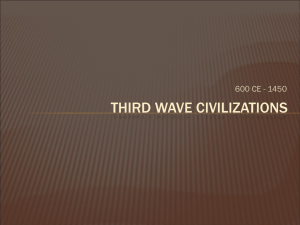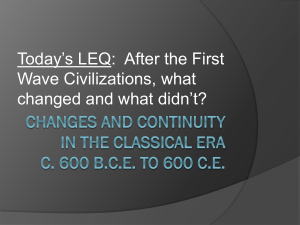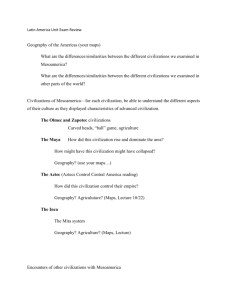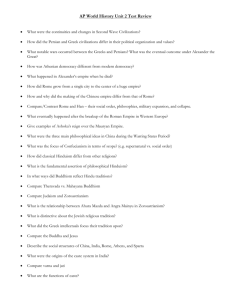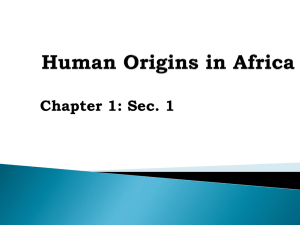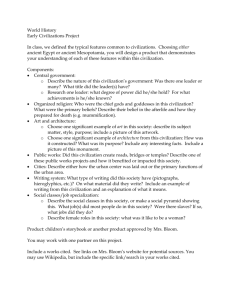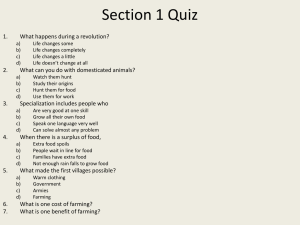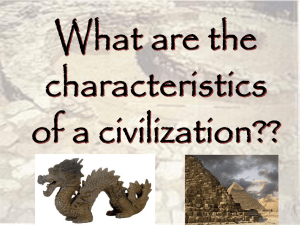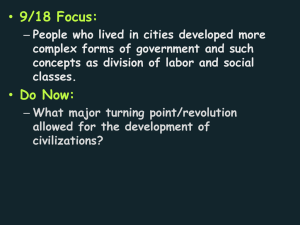File - Mr. Neadel`s AP World History
advertisement
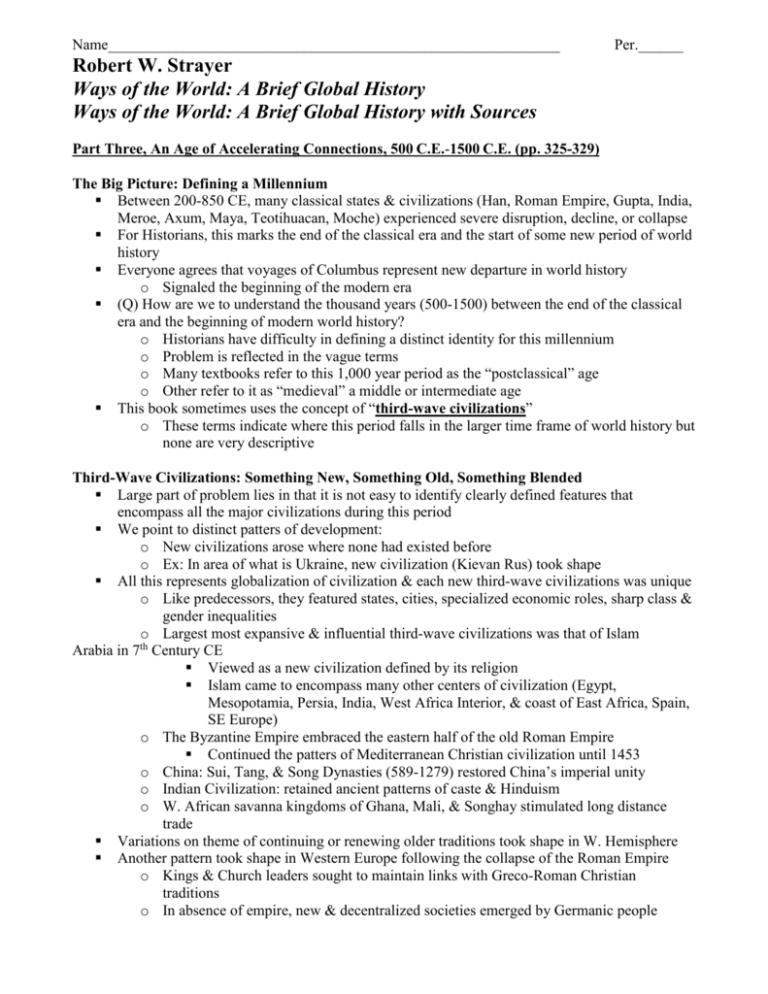
Name____________________________________________________________ Per.______ Robert W. Strayer Ways of the World: A Brief Global History Ways of the World: A Brief Global History with Sources Part Three, An Age of Accelerating Connections, 500 C.E.-1500 C.E. (pp. 325-329) The Big Picture: Defining a Millennium Between 200-850 CE, many classical states & civilizations (Han, Roman Empire, Gupta, India, Meroe, Axum, Maya, Teotihuacan, Moche) experienced severe disruption, decline, or collapse For Historians, this marks the end of the classical era and the start of some new period of world history Everyone agrees that voyages of Columbus represent new departure in world history o Signaled the beginning of the modern era (Q) How are we to understand the thousand years (500-1500) between the end of the classical era and the beginning of modern world history? o Historians have difficulty in defining a distinct identity for this millennium o Problem is reflected in the vague terms o Many textbooks refer to this 1,000 year period as the “postclassical” age o Other refer to it as “medieval” a middle or intermediate age This book sometimes uses the concept of “third-wave civilizations” o These terms indicate where this period falls in the larger time frame of world history but none are very descriptive Third-Wave Civilizations: Something New, Something Old, Something Blended Large part of problem lies in that it is not easy to identify clearly defined features that encompass all the major civilizations during this period We point to distinct patters of development: o New civilizations arose where none had existed before o Ex: In area of what is Ukraine, new civilization (Kievan Rus) took shape All this represents globalization of civilization & each new third-wave civilizations was unique o Like predecessors, they featured states, cities, specialized economic roles, sharp class & gender inequalities o Largest most expansive & influential third-wave civilizations was that of Islam Arabia in 7th Century CE Viewed as a new civilization defined by its religion Islam came to encompass many other centers of civilization (Egypt, Mesopotamia, Persia, India, West Africa Interior, & coast of East Africa, Spain, SE Europe) o The Byzantine Empire embraced the eastern half of the old Roman Empire Continued the patters of Mediterranean Christian civilization until 1453 o China: Sui, Tang, & Song Dynasties (589-1279) restored China’s imperial unity o Indian Civilization: retained ancient patterns of caste & Hinduism o W. African savanna kingdoms of Ghana, Mali, & Songhay stimulated long distance trade Variations on theme of continuing or renewing older traditions took shape in W. Hemisphere Another pattern took shape in Western Europe following the collapse of the Roman Empire o Kings & Church leaders sought to maintain links with Greco-Roman Christian traditions o In absence of empire, new & decentralized societies emerged by Germanic people o During centuries after 1000 CE, Western European civilization emerged as rapidly growing & expansive set of competitive states The Ties that Bind: Transregional Interaction in the Postcclassical Era Different patterns of development within particular civilizations of postclassical millennium made it difficult to define that era in a single encompassing fashion A common theme emerges: o The world’s various regions, cultures, & peoples interacted with one another far more extensively o Change in human societies was the product of content with strangers o Local cosmopolitan regions emerged in which trade, migration, or empire brought people together o “mini-globalization” became a distinctive feature of third-wave civilizations Both Egyptian & Mesopotamian cultural influence spread well beyond the core regions of those civilizations o Horseback-riding skills & chariot technology diffused widely across Eurasia o Much of Part Three highlights these intersections Three major mechanisms of cross-cultural interaction were of particular significance o 1) Trade: Exchange of goods has been everywhere one of the primary means of crosscultural interaction Historians have focused attention on long-distance trade, commercial relationships that linked distant human communities Ex: Silk Road Required that more people devote their energies to producing for a distant market rather than for the consumption of their own communities Many societies learned about new products via trade routes Such trade also had political consequences as new states or empires were established on the basis of resources derived from long-distance commerce Trade routes that linked various third-wave civilizations with one anotherReligious ideas, technologies & germs also made their ways along paths o 2) Large Empires Size & stability also provided stability also provided security that encouraged travelers & traders to journey long distances from their homelands Ex: Arab Empire, Mongol Empire, Inca Empire 500-1500, people with nomadic or herding way of life entered stage as empire builders- Arabs, Turks, Mongols, Aztecs o 3) Technologies diffused widely Technology spread beyond East Asia allowing development of silk industry in Eastern Mediterranean & later Italy Disease also linked distant communities (Black Death or Plague)

